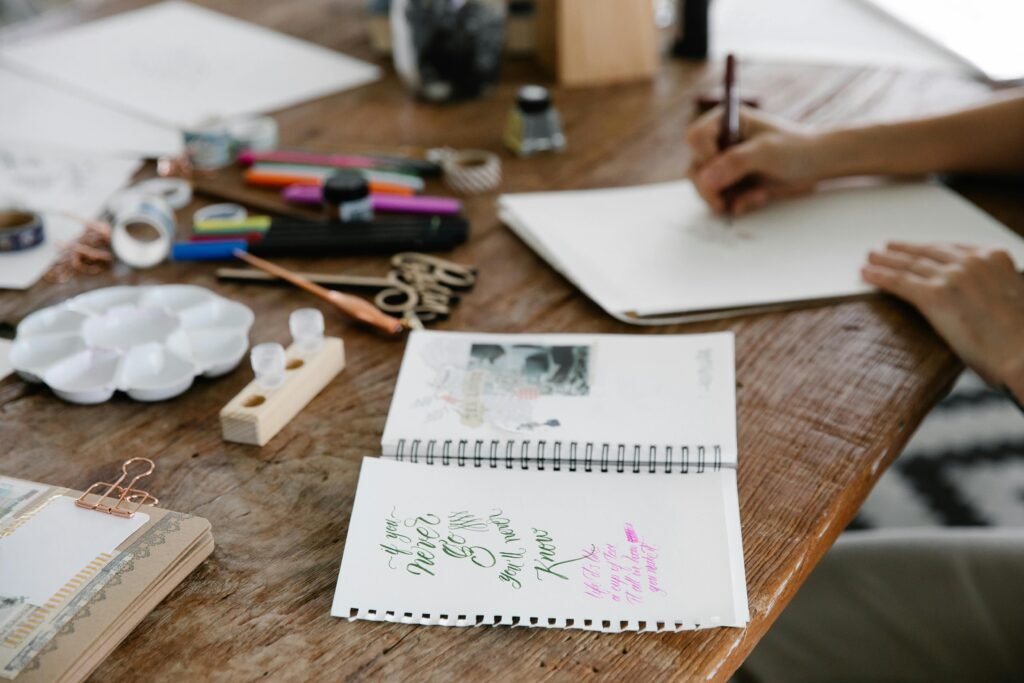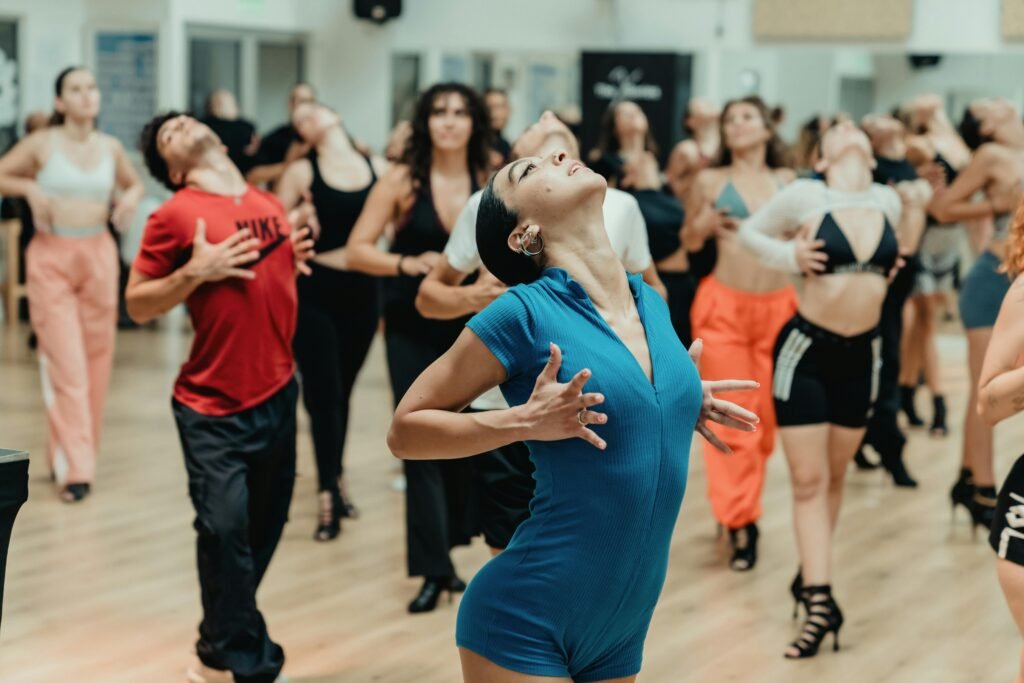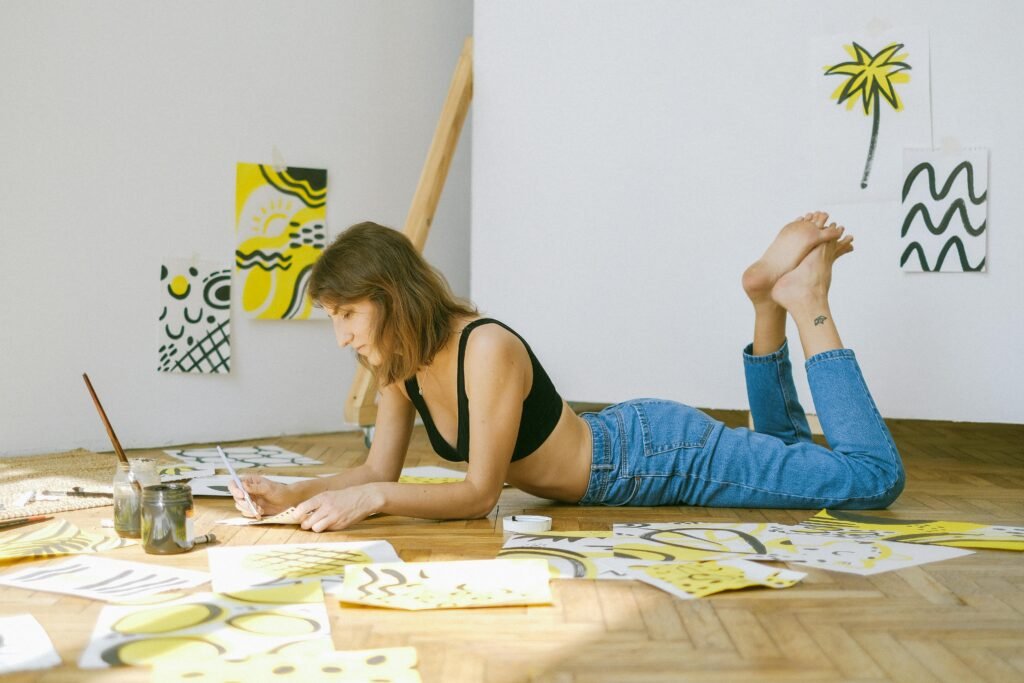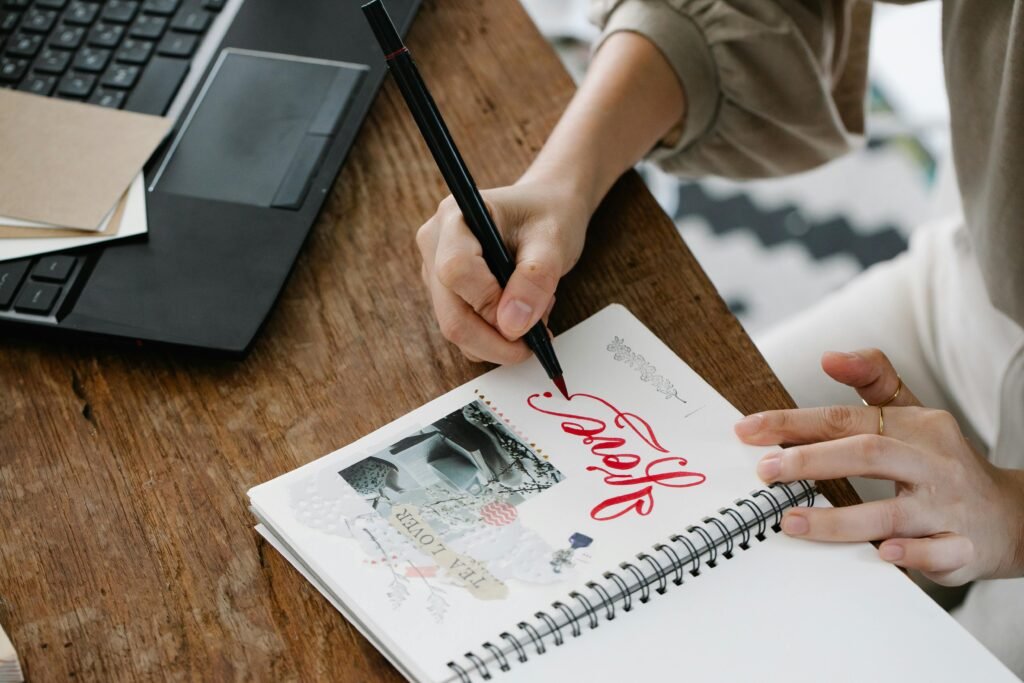
Understanding Nonverbal Memory Shaping
Nonverbal memory shaping revolves around the idea that our experiences and emotions can be reinterpreted and transformed without words.
Unlike traditional talk therapy, Nonverbal Trauma Recovery Methods leverage the body’s senses, movements, and visualizations to modify the emotional impact of past events.
The body and mind are interconnected; thus, altering one can influence the other.
This holistic perspective allows for new insights and healing, offering a refreshing contrast to purely cognitive approaches.
The essence of this approach lies in how our bodies store and recall memories.
Emotional experiences can get lodged in our physical selves, impacting our well being over time.
By engaging with these memories through the senses and the body, we can unlock pathways to healing that verbal methods may not reach.
This is particularly significant for those who find verbal expression challenging or re-traumatizing.
Somatic Memory Healing Techniques utilize the body’s innate ability to process and release stored emotions.
Practices such as mindful breathing, guided imagery, and body scans help in identifying where these emotions reside in the body.
Once located, these emotions can be addressed through various nonverbal methods, promoting a sense of relief and well being.
Movement based therapies, such as dance and yoga, are powerful tools in this approach.
They encourage the release of pent-up emotions, helping to shift the emotional charge of a memory.
Simple acts of movement, like stretching or mindful walking, can reconnect the mind and body, making it easier to process and transform past experiences.
The physical act of moving intentionally serves as a bridge to altering the emotional landscape tied to specific memories.
Visual methods also play a crucial role.
Art therapy, for example, allows individuals to externalize their memories, providing a new perspective.
By drawing, painting, or manipulating images, people can engage with their memories in a nonverbal yet profound way.
This can lead to new understandings and emotional shifts that verbal articulation might not achieve.
Sensory tools further enhance this nonverbal approach.
Scents, sounds, and tactile experiences can evoke and reshape emotional responses.
For instance, specific aromas or music can trigger memories, offering an opportunity to reinterpret these experiences in a controlled, therapeutic environment.
This sensory engagement helps to alter the emotional impact, making the memories less distressing over time.
The integration of these methods provides a comprehensive way to address trauma.
Combining visual, physical, and sensory techniques creates a robust framework for memory reshaping.
This multifaceted approach ensures that individuals can find the methods that resonate most with their personal healing journey.
By embracing these techniques, you can explore new ways to understand and transform your past, paving the way for emotional healing and growth.
This process not only helps in releasing stored emotions but also empowers you to rewrite the emotional responses tied to your memories.
Visual Techniques for Memory Reinterpretation

Visual techniques offer a powerful way to reshape how we perceive and process our memories.
By engaging with art and photography, individuals can access a visual medium that allows for a new perspective on past events.
These methods enable the externalization of memories, providing a unique opportunity to explore and transform emotional narratives.
Art therapy, for instance, uses drawing, painting, and sculpting as tools for emotional expression.
When individuals create art related to their memories, they can gain insights that may not surface through verbal methods.
This visual engagement encourages a deeper understanding of one’s past, fostering emotional healing.
Manipulating colors, shapes, and forms can symbolize complex emotions, making them more manageable and less overwhelming.
Creating visual journals is another effective technique.
By compiling drawings, photographs, and other visual elements in a journal, individuals can document their emotional journey.
This practice not only helps in tracking progress but also serves as a reflective tool, allowing for continuous reinterpretation of past experiences.
The act of journaling visually can lead to new insights and emotional release, as individuals see their memories from different angles.
Photography also plays a significant role in memory reinterpretation.
Capturing images that represent past experiences can help individuals process and transform their memories.
For example, taking photographs of places or objects associated with specific events can provide a new context, enabling a shift in emotional perspective.
Editing and arranging these photographs in creative ways can further enhance this ever changing process.
Collage making is another valuable visual technique.
By combining various images, textures, and materials, individuals can create a new narrative for their memories.
This method allows for the blending of different elements, symbolizing the integration of past experiences into a cohesive whole.
The tactile nature of collage making adds an additional sensory dimension, deepening the emotional engagement.
Guided imagery exercises also support visual memory reinterpretation.
Through visualization, individuals can imagine altering specific aspects of their memories, such as changing the setting or introducing supportive figures.
This mental rehearsal can lead to emotional shifts, making the memories less distressing.
Guided imagery can be facilitated by a therapist or practiced independently, offering a versatile tool for memory reshaping.
Exploring these visual techniques empowers individuals to actively participate in their healing process.
By engaging with their memories through creative and nonverbal means, they can uncover new layers of understanding and emotional resolution.
This approach is particularly beneficial for those who find verbal expression challenging or insufficient, providing an inclusive and accessible pathway to emotional healing.
By incorporating art, photography, and guided imagery into their healing practices, individuals can transform their relationship with their past, fostering a sense of empowerment and emotional well being.
These visual methods offer a dynamic and impactful way to reinterpret memories, opening new avenues for growth and healing.
Physical Movement and Memory Transformation

Movement based practices such as dance and yoga offer a dynamic way to transform the emotional charge tied to past memories.
These practices encourage the release of emotions stored in the body, making them highly effective for nonverbal trauma recovery.
Engaging in physical activities can help access and process emotions that might be difficult to reach through words alone.
Dance therapy allows for free expression and emotional release through movement.
The rhythm and flow of dance can unlock emotions that are buried deep within, offering a physical outlet for stress and unresolved feelings.
Whether it’s structured dance classes or spontaneous movement in a private space, the act of dancing can bring a sense of relief and new emotional insights.
Yoga, on the other hand, combines physical postures with mindful breathing to promote emotional and physical well being.
Specific poses can target areas of the body where tension and emotions are stored.
For instance, heart opening poses can release feelings of grief or sadness, while grounding poses can instill a sense of stability and security.
The integration of breathwork in yoga helps in regulating emotions, creating a balanced state of mind that aids in memory reshaping.
Beyond structured practices like dance and yoga, simple physical activities can also be transformative.
Mindful walking, for example, encourages a deep connection between the mind and body.
As you walk, paying attention to each step and the sensations in your body can help bring awareness to emotions linked to past memories.
This mindful engagement allows for a gradual release of emotional tension, facilitating a shift in how these memories are perceived.
Stretching exercises can similarly support emotional reprocessing.
Gentle stretching helps release physical tension, which often correlates with emotional stress.
By focusing on the sensations in your body as you stretch, you can become more attuned to where emotions are stored.
This awareness can guide you in addressing these emotions more effectively.
Tai Chi and Qigong are other beneficial practices that combine movement with breath control and mental focus.
These gentle martial arts promote energy flow throughout the body, helping to release blockages where emotions may be trapped.
The meditative aspect of these practices also fosters a sense of inner calm, making it easier to confront and transform difficult memories.
Incorporating these physical movement practices into your routine can provide a powerful means of engaging with and reshaping your past.
Whether through the expressive freedom of dance, the mindful balance of yoga, or the gentle flow of Tai Chi, these methods offer versatile and impactful ways to promote emotional healing and growth.
Sensory Approaches to Memory Reshaping

Sensory tools provide unique avenues to revisit and reshape our memories.
Our senses have a profound impact on how we perceive and process experiences, making them essential in nonverbal trauma recovery.
By using scents, sounds, and tactile activities, individuals can engage with their memories in ways that facilitate emotional transformation and healing.
Aromatherapy is one such sensory approach that leverages the power of scents to evoke and alter emotional responses.
Certain smells can trigger memories, offering a chance to reframe these experiences in a controlled environment.
For example, the scent of lavender is known for its calming properties and can help ease anxiety related to past events.
Similarly, citrus scents can uplift and energize, providing a fresh perspective on old memories.
By incorporating these aromas into therapeutic practices, individuals can create new associations that transform their emotional responses.
Music therapy also plays a crucial role in sensory memory reshaping.
Music has the ability to evoke powerful emotions and memories, offering a pathway to explore and reinterpret past experiences.
Listening to songs that hold personal significance or using music to create new auditory landscapes can help in processing complex emotions.
Playing musical instruments or even simple activities like humming can also provide a nonverbal outlet for emotional expression, aiding in the release of stored emotions.
Tactile methods such as working with clay, sand, or other materials offer another effective way to engage with memories.
These hands on activities allow individuals to physically manipulate materials, providing a tangible way to explore their emotions.
Clay therapy, for instance, involves shaping and molding clay to express feelings and memories.
The texture and malleability of the clay offer a sensory-rich experience that can lead to emotional breakthroughs.
Similarly, sand tray therapy uses miniature figures and a sandbox to create scenes that represent past experiences.
This method allows for a safe and controlled exploration of memories, making it easier to process and transform emotional narratives.
Incorporating sensory activities into daily routines can significantly aid in memory reshaping.
For instance, creating a sensory toolkit with favorite scents, calming music, and tactile objects can provide immediate support when dealing with emotional stress.
This toolkit can serve as a personalized resource for emotional regulation, offering comfort and grounding during challenging moments.
Combining these sensory approaches with other nonverbal techniques can create a holistic framework for memory reshaping.
By engaging multiple senses, individuals can access deeper layers of emotional processing, leading to more profound healing and growth.
Combining Techniques for Holistic Healing

Integrating a variety of methods can deepen the healing process, offering a comprehensive approach to reshaping memories.
By merging visual, physical, and sensory techniques, individuals can address different aspects of trauma more effectively, facilitating a more thorough emotional recovery.
Personalizing this combination approach is essential.
Each person’s experience with trauma is unique, and so is their path to healing.
Experimenting with different techniques allows you to discover what resonates most with your specific needs and preferences.
This personalized exploration ensures that the methods you choose are not only effective but also meaningful to your healing journey.
For example, combining art therapy with movement based practices can amplify the healing effects.
You might start with a session of yoga or mindful walking to release physical tension and then transition to creating art that reflects your emotional state.
This seamless integration can help unlock deeper emotional insights, as the physical movement primes the body and mind for expressive and creative work.
Similarly, pairing sensory tools with guided imagery exercises can enhance emotional processing.
Engaging in a guided imagery session while surrounded by calming scents or soothing sounds can create a more immersive and supportive environment.
This multi-sensory experience can help you engage more fully with the visualization, leading to more profound emotional shifts.
Another effective combination could involve tactile activities like clay therapy alongside mindfulness practices.
The physical act of molding clay can provide a tangible way to express and process emotions, while mindfulness techniques can help you stay present and attuned to your feelings throughout the process.
This dual approach can foster a deeper connection to your emotions, facilitating a more holistic healing experience.
The key to successful integration lies in mindfulness and adaptability.
It’s important to approach each technique with an open mind and be willing to adjust your methods as you go.
Pay attention to how your body and emotions respond to different practices, and don’t hesitate to modify your approach based on what feels most beneficial.
It’s also crucial to recognize that while memories may become more vivid or confident over time, repeated questioning can increase confidence without improving accuracy.
Therefore, balancing different techniques requires careful attention to ensure that the healing process remains constructive and grounded.
Holistic healing through the integration of multiple nonverbal techniques offers a dynamic and adaptable pathway to emotional well being.
By combining these methods, you can create a tailored and effective healing journey that addresses your unique needs and fosters lasting emotional growth.
Practical Tips and Examples

Embarking on nonverbal memory reshaping can be a transformative journey.
Begin by exploring techniques that resonate with you, whether through art, movement, or sensory engagement.
Create a safe, comfortable space for experimentation, and allocate regular time for these practices to maximize their benefits.
Here’s a practical guide to get started:
1. **Select a memory to reinterpret**: Choose an experience that you feel ready to address. It’s okay to start small and gradually work up to more challenging memories.
2. **Choose a nonverbal technique**: Identify a method that appeals to you. This could be art therapy, mindful walking, yoga, or any other technique that you find intriguing.
3. **Dedicate time for practice**: Set aside a specific time each day or week to engage deeply with your chosen method. Consistency can help you build a routine and see progress.
4. **Reflect on insights and shifts**: After each session, take a moment to reflect on any emotional changes or new perspectives that emerged. Journaling these reflections can provide valuable insights over time.
5. **Adjust and integrate methods**: Be flexible and willing to adapt your approach. If one technique isn’t working as well as you’d hoped, try integrating another method to see if it enhances your experience.
Learning from those who have walked this path can be encouraging.
Many individuals report significant emotional relief and newfound perspectives on past experiences through nonverbal methods. It’s important to approach these techniques gently and mindfully.
For example, someone using art therapy might find that drawing their feelings brings clarity and a sense of release.
Another person might use yoga to work through tension stored in their body, finding that physical movement helps unlock and process deep-seated emotions.
Sensory tools like aromatherapy or music can create an immersive environment, making it easier to engage with and transform difficult memories.
Ultimately, your journey with nonverbal techniques is uniquely yours.
Embrace the process with patience and openness, allowing yourself to discover the methods that best support your emotional healing and growth.
